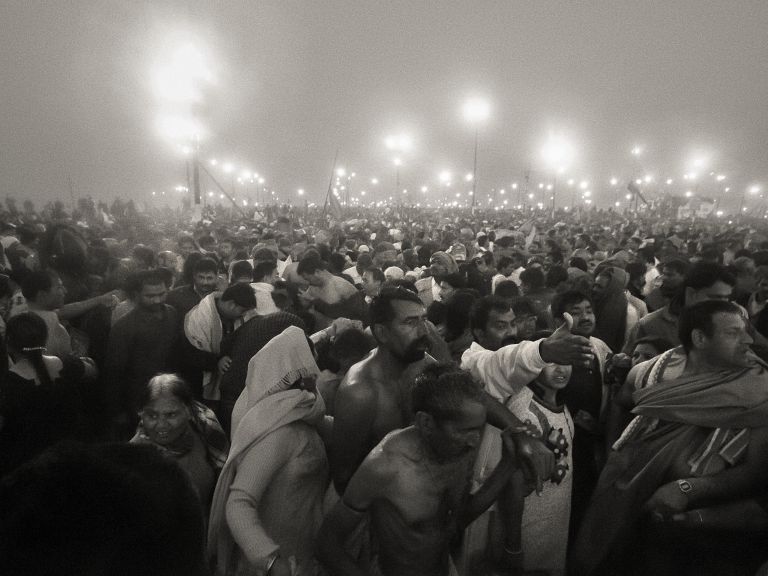Project Detail: Four drops of amrita
Contest:
Reportage and Documentary 2019
Brand:
LuganoPhotoDays
Author:
Massimo Allegro
Status:
Selected
Project Info
Four drops of amrita
The largest religious gathering in history
The Kumbh Mela is a mass Hindu pilgrimage during which the faithful gather to immerse themselves in Ganga River and wash the sins of a life.
The origin of the festivity derives from an episode narrated in one of the most popular puranas (sacred hindū texts) the Bhāgavata Purāṇa.
The myth tells that the Devas lost their strength due to the curse of the sage Durväsä Muni and, wanting to win her back, they asked Brahmā and Shiva for help. The latter suggested addressing Vishnu. He told them to wave the oceans to obtain the amrita, the water of eternal life. This required the devas (gods) to agree with their bitter enemies, the asuras (demons), to work together, with the promise of sharing the resulting benefits. The asuras accepted. When, however, the urn (khumba) containing the amrita appeared, a fight broke out between the two factions that went mad for twelve days and twelve nights, equivalent to twelve human years.
It is said that during the battle Vishnu flew away with the urn of Amrita, losing a few drops that fell into four specific places on the earth: Allahabad, Haridwar, Ujjain and Nashik which became sacred and where the festival of Kumbh Mela was established.


















